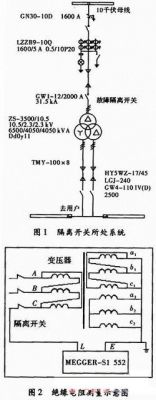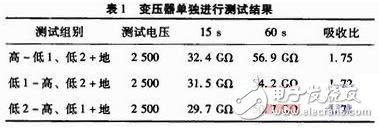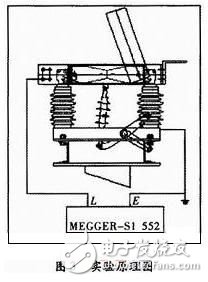Test and Analysis of Insulation Sleeve Failure before Putting High Voltage Isolation Switch into Operation
Before the high-voltage isolating switch was put into operation, a fault in the insulation bushing of the isolating switch was identified during routine testing. Based on the actual conditions and field experience, the root cause of the fault was determined, and effective corrective actions were taken. The focus was placed on specific treatment methods, and preventive measures were proposed to avoid similar failures in the future.
Keywords: Isolating switch; Porcelain insulator failure; Processing method
1. Accident Phenomenon
During the insulation test of an outdoor isolating switch (model GW1-12/2000A) in a 10 kV system before commissioning, it was found that the insulation level of the C-phase blade was significantly lower than the required standards. This indicated that the isolating switch did not meet the system’s operational requirements, which could pose a serious risk to the safe operation of the entire electrical system.
2. Accident Analysis and Handling
The isolating switch is located within a system that includes a current transformer followed by a three-winding 10 kV step-down transformer. The isolating switch is connected to the transformer using a bronze busbar of 100×8 size, and the secondary side cables of the transformer have not yet been connected.

Both the isolating switch and the transformer were tested for insulation resistance using the MEGGER-S1-552 electronic megohmmeter at a voltage of 2,500 V. The test procedure is illustrated in Figure 2.
The measured insulation resistance value was only 24.5 MΩ, which was far below the factory test values, which were on the order of GΩ. This significant discrepancy raised concerns about the integrity of the isolating switch. After eliminating environmental factors such as humidity and weather conditions, the team decided to isolate the switch from the transformer and conduct separate tests on the transformer to determine if any damage occurred during transportation or installation.

The individual tests conducted on the transformer showed that its insulation resistance was much higher, with a good absorption ratio, indicating that the transformer itself was in good condition. This confirmed that the issue was indeed with the isolating switch.
To further investigate, the isolating switch was tested separately for each phase. The test involved closing the blade, connecting the high-voltage end to the static contact, the low-voltage end to the base of the blade, and grounding the system. The test setup is shown in Figure 3.

Despite repeated testing, the insulation resistance remained low, confirming the presence of a defect in the isolating switch. Further inspection revealed that the porcelain insulating bushing had developed cracks or internal moisture ingress, leading to reduced insulation performance.
To address this issue, the faulty porcelain bushing was replaced with a new one of the same specification. After the replacement, the insulation resistance was retested and met the required standards. Additionally, preventive measures were implemented, including regular inspections, improved handling procedures during installation, and enhanced monitoring of insulation levels during commissioning.
This case highlights the importance of thorough pre-commissioning testing and the need for prompt identification and resolution of insulation issues in high-voltage equipment to ensure reliable and safe system operation.
CBD VAPE,THC VAPE,CBD, Best Cbd Vape Cartridge, Vapes Near Me, CBD Disposable Vape Pod
Shenzhen Essenvape Technology Co., Ltd. , https://www.essenvape.com